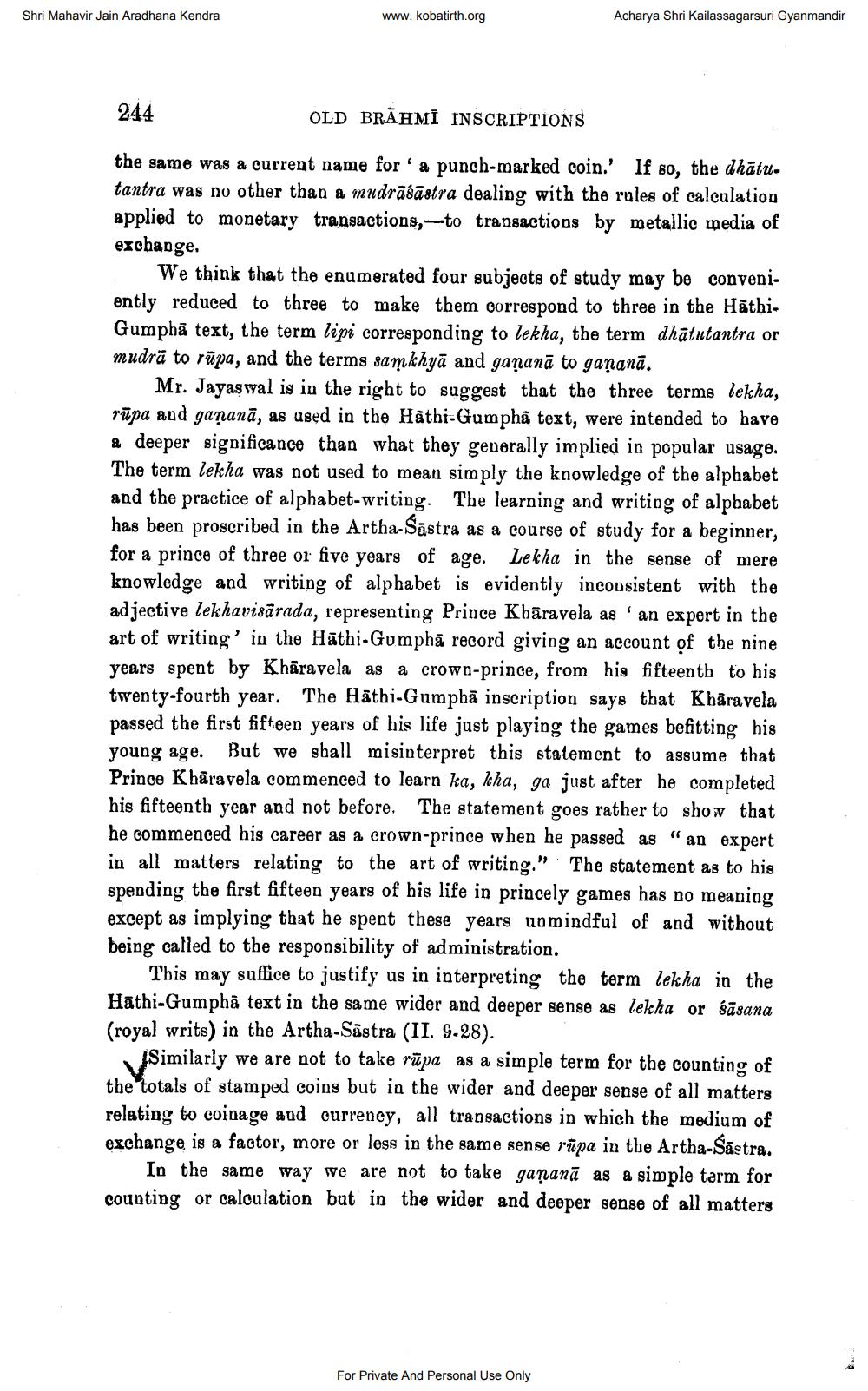________________
Shri Mahavir Jain Aradhana Kendra
www.kobatirth.org
Acharya Shri Kailassagarsuri Gyanmandir
244
OLD BRAHMI INSCRIPTIONS
the same was a current name for ' a punch-marked coin.' If so, the dhātu. tantra was no other than a mudrāśāstra dealing with the rules of calculation applied to monetary transactions,-to transactions by metallic media of exchange.
We think that the enumerated four subjects of study may be conveniently reduced to three to make them correspond to three in the HäthiGumpbā text, the term lipi corresponding to lekha, the term dhātutantra or mudrā to rūpa, and the terms samkhyā and gañanā to gañanā.
Mr. Jayaswal is in the right to suggest that the three terms lekha, rūpa and gañanā, as used in the Hathi-Gumphā text, were intended to have a deeper significance than what they generally implied in popular usage. The term lekha was not used to mean simply the knowledge of the alphabet and the practice of alphabet-writing. The learning and writing of alphabet has been proscribed in the Artha-Šāstra as a course of study for a beginner, for a prince of three or five years of age. Lekha in the sense of mere knowledge and writing of alphabet is evidently inconsistent with the adjective lekhavisārada, representing Prince Khāravela as an expert in the art of writing' in the Hāthi-Gumphā record giving an account of the nine years spent by Khāravela as a crown-prince, from his fifteenth to his twenty-fourth year. The Häthi-Gumphā inscription says that Khāravela passed the first fifteen years of his life just playing the games befitting his young age. But we shall misinterpret this statement to assume that Prince Khāravela commenced to learn ka, kha, ga just after he completed his fifteenth year and not before. The statement goes rather to show that he commenced his career as a crown-prince when he passed as “an expert in all matters relating to the art of writing,". The statement as to his spending the first fifteen years of his life in princely games has no meaning except as implying that he spent these years uomindful of and without being called to the responsibility of administration.
This may suffice to justify us in interpreting the term lekha in the Hāthi-Gumphā text in the same wider and deeper sense as lekha or sāsana (royal writs) in the Artha-Sāstra (II. 9-28).
Similarly we are not to take rūpa as a simple term for the counting of the totals of stamped coins but in the wider and deeper sense of all matters relating to coinage and currency, all transactions in which the medium of exchange is a factor, more or less in the same sense rūpa in the Artha-Šāstra.
In the same way we are not to take gañanā as a simple tarm for counting or calculation but in the wider and deeper sense of all matters
For Private And Personal Use Only




